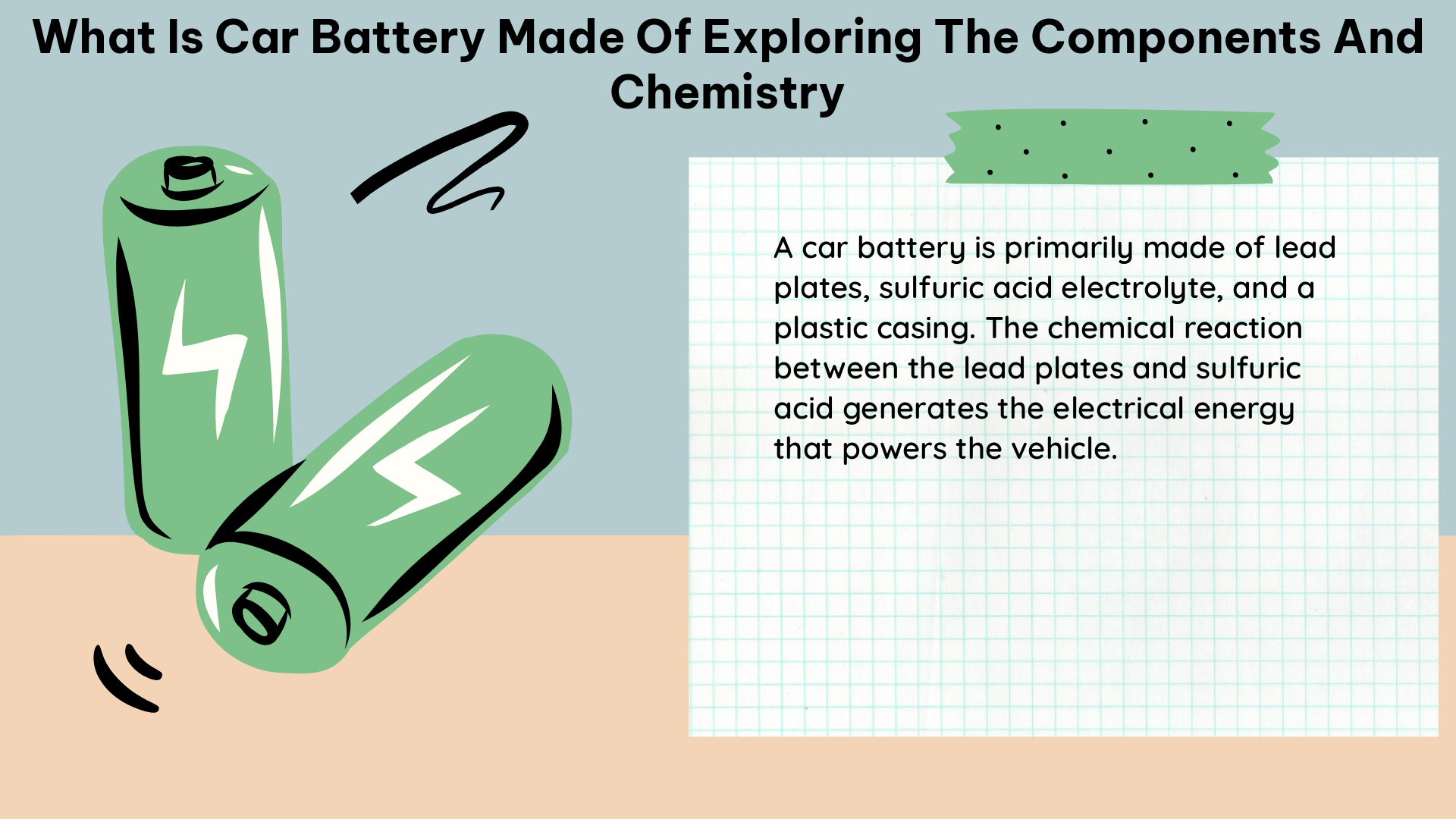A car battery, specifically a lithium-ion battery, is primarily composed of various minerals and metals, with the cathode being the most mineral-intensive component. The choice of battery chemistry can have significant implications for the supply chain and the environment, with nickel-based batteries currently being the most common type of battery used in electric vehicles. However, the use of nickel in these batteries presents potential supply chain risks and environmental concerns, making it important to explore alternative battery chemistries and supply chain strategies.
The Anode: Graphite
The anode of a car battery is typically made of graphite, a form of carbon. Graphite is a popular choice for the anode material due to its high electrical conductivity, low cost, and ability to reversibly intercalate lithium ions during the charging and discharging process.
- Graphite accounts for approximately 12-15% of the total weight of a lithium-ion battery cell.
- The graphite used in the anode is typically synthetic graphite, which is produced by high-temperature treatment of petroleum coke or coal tar pitch.
- The particle size and morphology of the graphite can be tailored to optimize the battery’s performance, such as improving its rate capability and cycle life.
The Cathode: Lithium, Nickel, Manganese, and Cobalt

The cathode of a car battery is made of a combination of lithium, nickel, manganese, and cobalt. The exact composition of the cathode can vary, with different ratios of these elements used to achieve specific performance characteristics.
Nickel-based Cathodes
- Nickel-based cathodes, such as NMC (Nickel-Manganese-Cobalt) and NCA (Nickel-Cobalt-Aluminum), are the most common type of cathode used in electric vehicles.
- NMC811 batteries have a cathode composed of 80% nickel, 10% manganese, and 10% cobalt.
- NMC523 batteries have a cathode composed of 50% nickel, 20% manganese, and 30% cobalt.
- Nickel-based cathodes offer high energy density, which allows for longer driving ranges, but they also have a higher environmental impact and supply chain risks due to the limited supply of nickel.
Lithium Iron Phosphate (LFP) Cathodes
- LFP batteries do not use any nickel and typically offer lower energy densities at better value.
- LFP batteries use lithium carbonate, which is a cheaper alternative to the lithium hydroxide compounds used in nickel-based batteries.
- Tesla recently began using LFP batteries in some of its standard-range cars, driving up the price of lithium carbonate.
- LFP batteries have a lower energy density compared to nickel-based batteries, but they are more stable, safer, and have a longer cycle life.
Cathode Composition and Mineral Intensity
- The cathode is the most mineral-intensive component of a battery, accounting for 31.3% of the mineral weight in the average battery produced in 2020.
- For a 60 kilowatt-hour (kWh) battery, the cells contain approximately 185 kilograms of minerals, not including materials in the electrolyte, binder, separator, and battery pack casing.
- The exact mineral composition of the cathode can vary depending on the battery chemistry, with different ratios of lithium, nickel, manganese, and cobalt used.
Current Collectors and Battery Casing
In addition to the anode and cathode, a car battery also contains other components:
- Aluminum and copper are used for the current collectors, which help to transport the electrical current in and out of the battery.
- Steel is used in the casing to protect the cell from external damage and provide structural integrity.
Electrolyte and Other Components
The battery also contains an electrolyte, which is a solution that allows the flow of ions between the anode and cathode during charging and discharging. The electrolyte typically consists of lithium salts dissolved in organic solvents.
Other components of a car battery include:
- Binders: Polymers used to hold the active materials together.
- Separators: Thin, porous membranes that physically separate the anode and cathode to prevent short circuits.
- Battery pack casing: The outer housing that protects the battery cells and other components.
Implications of Battery Chemistry
The choice of battery chemistry can have significant implications for the supply chain and the environment:
- Lithium-ion batteries using nickel-based chemistries, such as NCA and NMC, are currently the most common type of battery used in electric vehicles. These batteries are preferred for their high energy density, which allows for longer driving ranges.
- However, nickel is a critical mineral with a limited supply and high environmental impact, making it a potential bottleneck in the transition to electric vehicles.
- In contrast, LFP batteries do not use any nickel and typically offer lower energy densities at better value. These batteries use lithium carbonate, which is a cheaper alternative to the lithium hydroxide compounds used in nickel-based batteries.
To better understand the supply chain risks associated with different battery chemistries, it is important to map the global supply chains for critical minerals such as lithium, cobalt, nickel, and manganese. This can help identify potential bottlenecks and vulnerabilities in the supply chain, as well as opportunities for domestic production and responsible sourcing.
References:
– The Key Minerals in an EV Battery – Elements by Visual Capitalist (2022-05-02)
– A database of battery materials auto-generated using … – Nature (2020-08-06)
– Car Battery – an overview | ScienceDirect Topics
– What Elements are Used in Electric Car Batteries? – AZoM (2016-06-15)
– Electric vehicle battery chemistry affects supply chain disruption … (2024-03-08)

The lambdageeks.com Core SME Team is a group of experienced subject matter experts from diverse scientific and technical fields including Physics, Chemistry, Technology,Electronics & Electrical Engineering, Automotive, Mechanical Engineering. Our team collaborates to create high-quality, well-researched articles on a wide range of science and technology topics for the lambdageeks.com website.
All Our Senior SME are having more than 7 Years of experience in the respective fields . They are either Working Industry Professionals or assocaited With different Universities. Refer Our Authors Page to get to know About our Core SMEs.